“Business operations manager” – sounds like a simple role, doesn’t it? It’s quite literally in the name: you manage internal operations within the business.
But now, with the rise of async work and agile project management, BizOps managers need to go beyond just managing day-to-day operational issues and answering questions like “Hey, how do we use this tool again?”.
You’d need to make data-driven decisions, align multiple teams, and create cohesive strategies to drive business growth.
Let’s have a look at how you can become a killer business operations manager and help your company scale with the right processes in place ⬇️
What Does a Business Operations Manager Do?
A business operations manager oversees daily tasks, coordinates teams, and ensures that project deadlines are met.
While this may sound like tedious admin work, the role has a lot more to it today and now involves the following:
Look for improvements. Imagine you're overseeing order fulfillment at a growing e-commerce company. You notice shipping delays, so you streamline the process by partnering with a faster logistics provider.
Analyze data: After implementing the new shipping system, you review performance metrics and customer feedback. The data shows a 20% reduction in delivery times and higher customer satisfaction, validating your decision.
Plan for the future: Using these insights, you adjust the budget to allocate more funds for logistics, set targets to further reduce delivery times by 10%, and implement a plan to handle seasonal order spikes.
As you can see, BizOps has evolved into a more strategic role, where you need to develop foresight and focus on the bigger picture.
Strategic Importance
BizOps Managers have a broad view of the organization, which helps them identify problems and needs in different departments. A major chunk of their work involves acting as a bridge between strategy and execution.
Let’s say you’re running a recently funded SaaS company and struggling with scaling your product team. Your BizOps manager should identify the bottlenecks and find a resolution to help the company in the long run.
They can suggest standardizing the hiring process by creating clear job description templates, assessing candidates with a hiring scorecard, and introducing an applicant tracking system (ATS). Now, you can quickly evaluate and hire candidates for the product team and reduce the time-to-hire for future roles.
Moreover, BizOps managers can use knowledge management tools (ahem, Slite) to streamline HR processes by templatizing and storing all the documents needed by hiring teams in one convenient location.
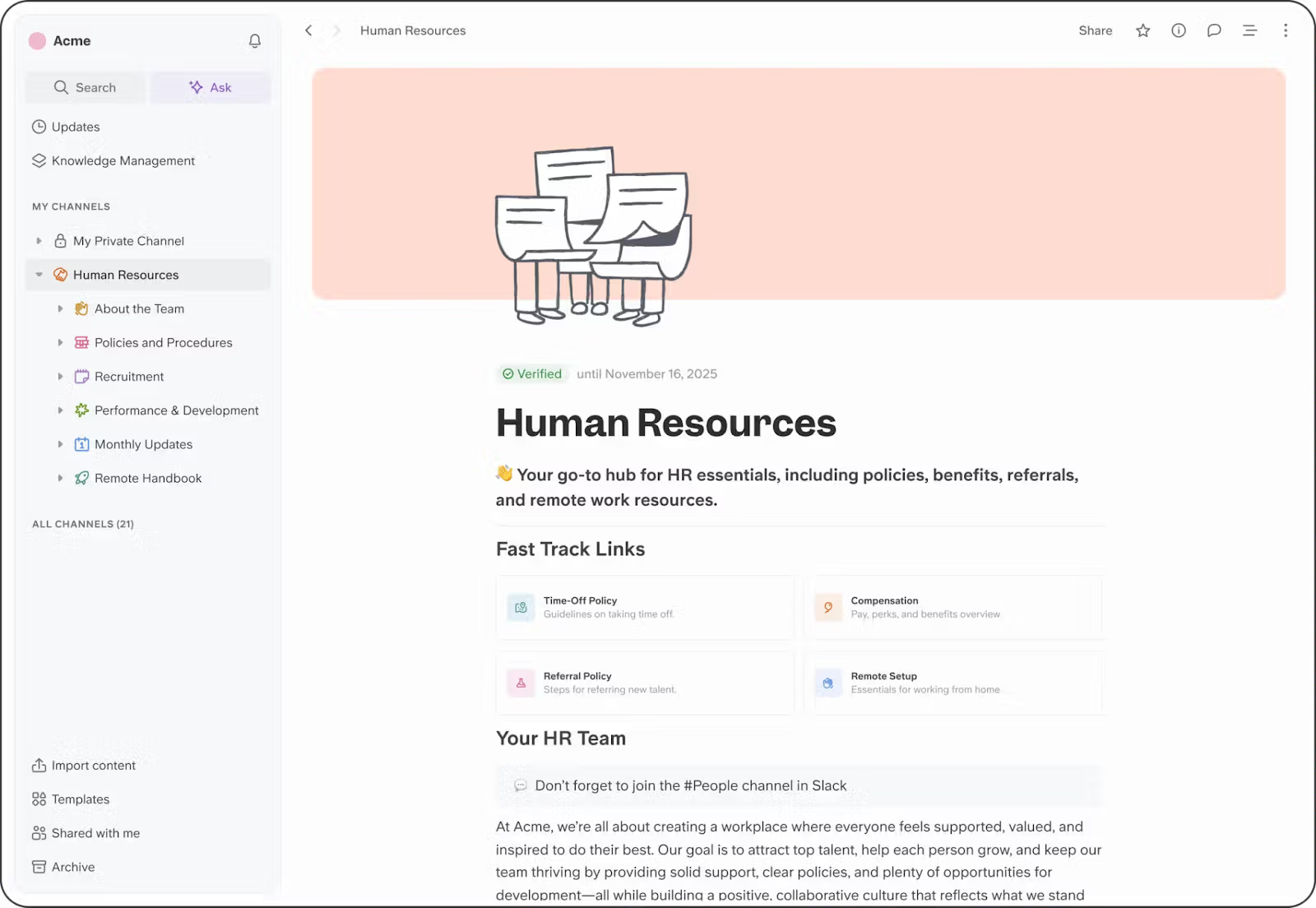
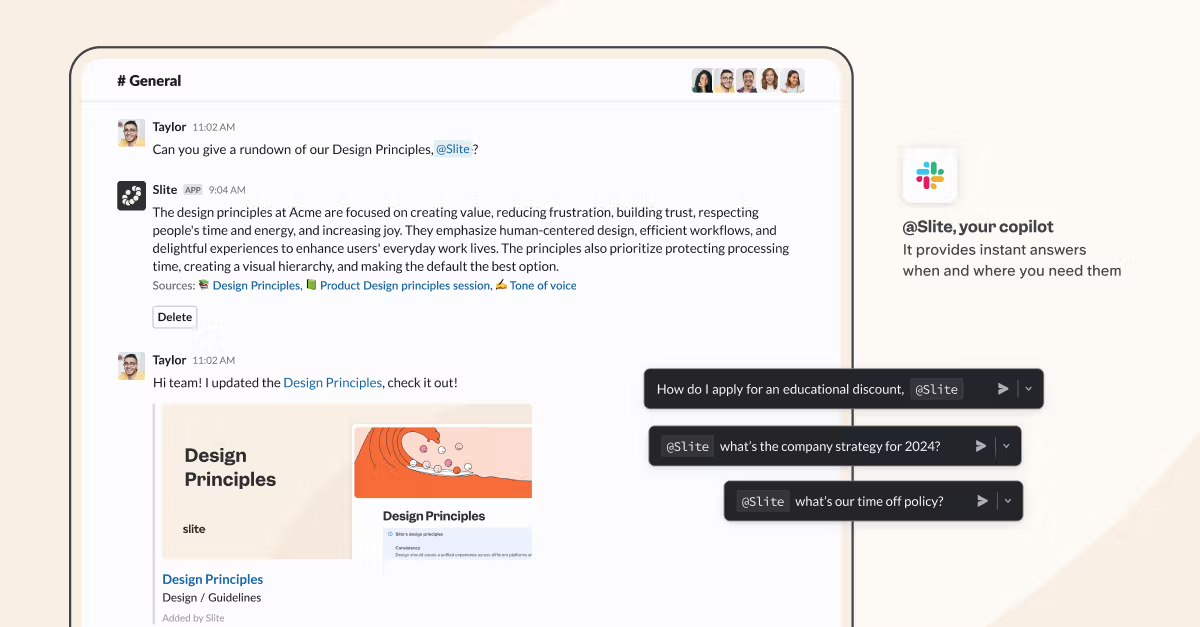
Career trajectory
Let’s look at how does a career in business operation looks like:
- In your early career, you’re likely to start in roles like Operations Analyst, focusing on learning the core aspects of business operations, such as project management, process improvement, data analysis, and internal communication.
- While in mid-career roles, you can expect to work in data analysis, managing budgets, and cross-functional leadership.
- As you grow, you move up to a VP or COO role, where you can shape the entire company’s operational strategy.
- Many BizOps professionals go on to launch startups with a strong understanding of building scalable processes.

Essential Skills and Competencies
Data analysis
Ignoring data analysis when improving business operations is like driving with a blindfold. Only difference is instead of inevitably destroying the car, you destroy your chances to drive revenue for your company.
Here’s an example of how BizOps managers can use data to make informed decisions:
Suppose you’ve launched a new feature and want to know if your users actually find it useful. Unfortunately, your product team reports low feature adoption rates. Your BizOps manager could analyze customer usage data to identify overall trends in past feature launches.
They find that customers don’t contact CS to learn more about the seemingly complicated features and instead avoid using it altogether. They’d then recommend integrating help articles within the product so that customers can resolve their queries without contacting your support team.
Using data-driven insights, they align the company’s resources and offerings with customer needs, driving long-term success.
Project management
Given that you’re basically putting out operational fires while also preventing future fires, you need to master the art of project management. This means gaining expertise in the following:
- Streamline workflows and implement automation to boost productivity.
- Analyze performance metrics using tools like Tableau or Excel to inform strategic decisions.
- Prioritize projects and allocate budgets or resources for maximum efficiency.
- Identify risks and develop contingency plans to prevent disruptions.
- Translate company objectives into actionable projects with clear timelines.
- Communicate insights and updates to stakeholders to ensure alignment and transparency.
A BizOps manager should analyze workflows and bottlenecks and implement systems that keep operations running smoothly.
For instance, during a company-wide software migration, they can establish a centralized project plan, hold weekly progress check-ins with department leads, and track milestones to ensure timely execution and accountability.
Cost Optimization
Cost optimization isn’t about cutting corners. It’s about spending smartly. BizOps identifies areas where resources are wasted by analyzing data.
For example, they may negotiate better vendor contracts or switch to cloud-based tools to save on IT expenses. These savings can be reinvested into growth opportunities, giving the company a competitive edge.
Risk Management
Every decision comes with risks. A Business operations manager should anticipate these risks, create backup plans, and protect the company from potential problems.
Let’s say your company plans to initiate a new pricing model. However, there’s a risk that customers might churn if the new pricing is perceived as too high or unfair.
To mitigate this, they can develop a rollback plan to revert to the old pricing if early results indicate significant churn.
Tools of the Trade
Project Management and Documentation Platforms
You can use tools like Asana and Trello to focus on assigning tasks, managing deadlines, and ensuring everyone’s on track with their deliverables.
Of course, when managing these projects, you’ll inevitably create tons of documents. If you want a tool for effective knowledge management – Slite is a no-brainer!
Here’s how Slite can help busy BizOps teams:
1) Skip the tedium and use our project templates to kick off new projects immediately
2) Manage and update all internal documentation in one place for easy access. You can also verify documents without the constant back and forth.
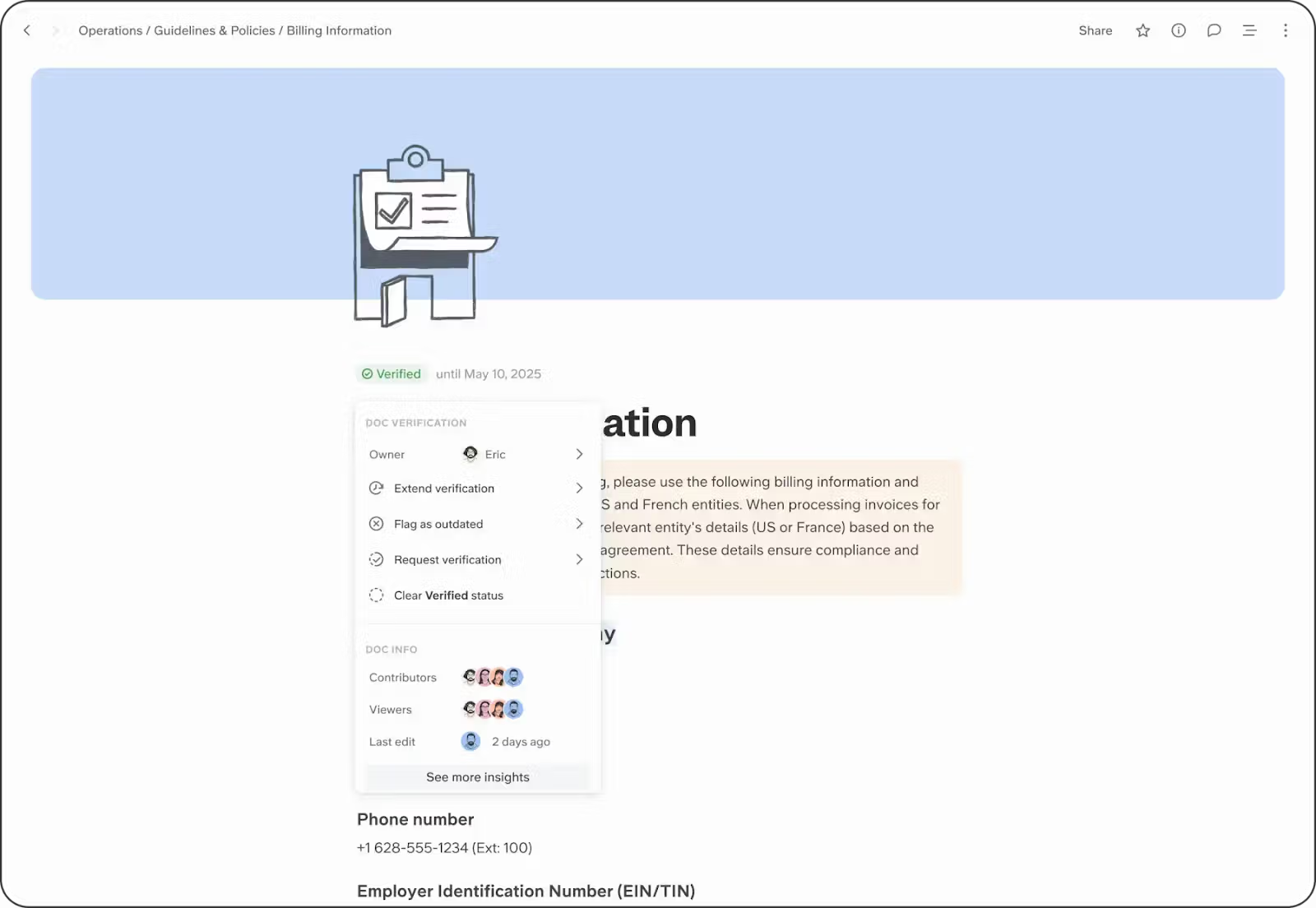
3) Analyse whether teams are using your documents with workspace analytics
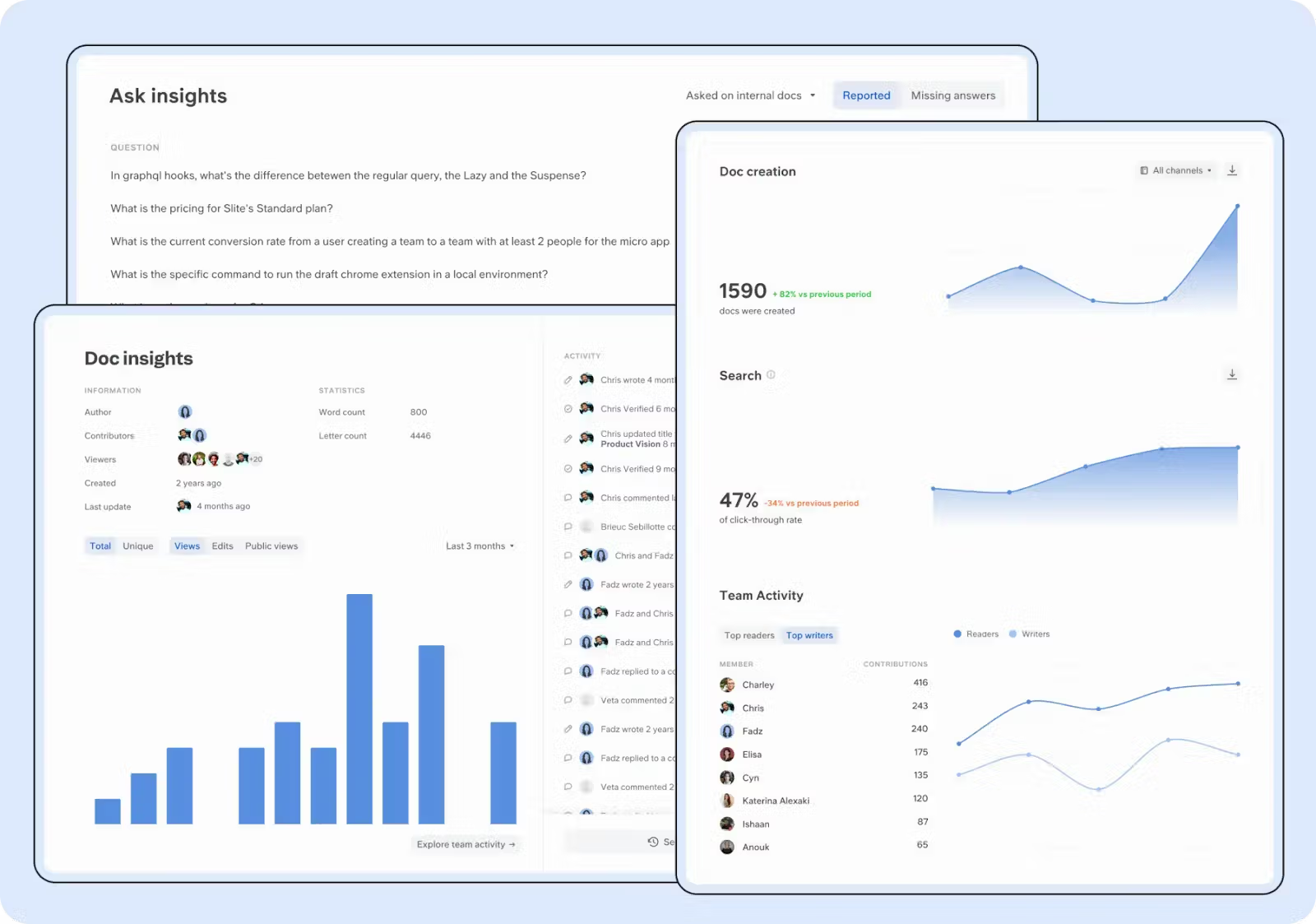
Here’s how Omnisend improved team collaboration with Slite:
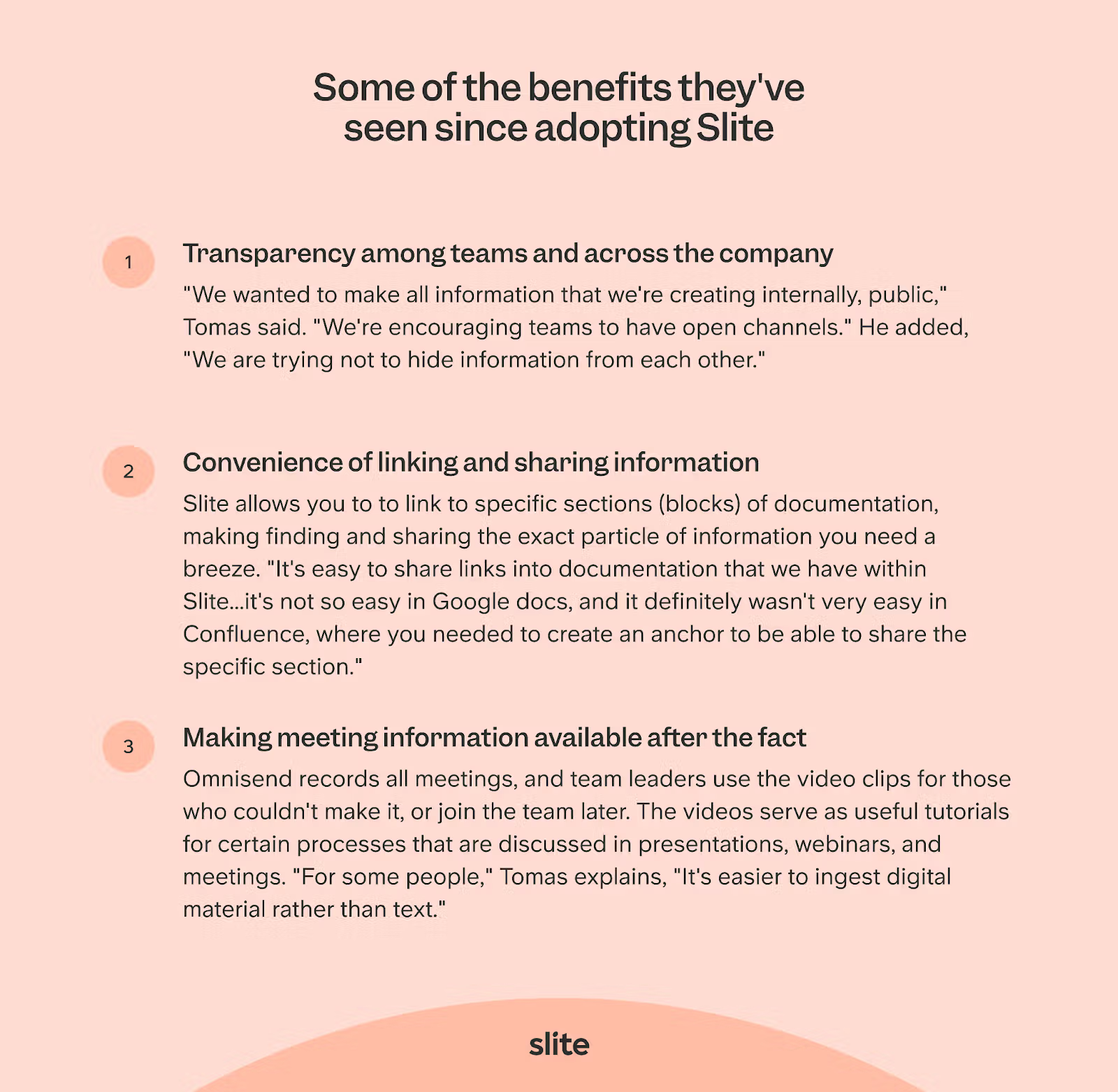
💡You can also use our time saving calculator to determine how much time your team can save using Slite!
Analytics Tools
Data drives informed decision-making for any business. Platforms like Google Analytics and Tableau are very helpful in getting insights and market trends.
- Tableau or Power BI: For creating interactive dashboards and visualizing operational metrics
- Google Analytics: For tracking website performance and user behavior
- Mixpanel: For product analytics and user engagement tracking
These tools help managers identify trends, spot inefficiencies, and make informed decisions. For example, using Power BI to analyze customer service data might reveal peak support hours, helping optimize staff scheduling.
Communication Tools
Clear communication is important for cross-functional collaboration. Slack and Microsoft Teams provide platforms where messages, documents, and feedback can be exchanged swiftly across departments. You can use:
- Slack or MS Teams: For real-time team communication
- Zoom or Google Meet: For virtual meetings and training sessions
Our top pick for async communication- Super
Super transforms how operations teams access critical information by connecting Slite with Linear, GitHub, HubSpot, and 20+ other business tools into one intelligent search interface. Instead of switching between platforms to gather project status, customer data, and technical specifications, BizOps managers can ask questions like "What's blocking our Q4 initiatives?" or "Show me all customer feedback about our new pricing model" and get comprehensive answers with source citations from all connected tools.
This cross-tool intelligence is especially valuable for BizOps roles that require coordinating across departments and making data-driven decisions quickly. Teams save an average of 4 hours per person per week while ensuring operational decisions are based on complete, accessible information from across the organization. Built by the team behind Slite, Super integrates seamlessly through Chrome extension, Slack bot, and web app access. Ready to eliminate the tool-switching that slows down operations management? Book a demo to see how enterprise AI search enhances operational efficiency.
Automation Solutions
No one likes to switch from one tool to another for basic tasks. You can use tools like Zapier or Make.com to connect different apps and automate manual workflows, which frees up time for strategic work. Ensure that all your tools have strong integration capabilities so you don’t leave important data in disparate systems.
Measuring Success
Set Key Performance Indicators
KPIs help track your progress and focus on critical areas like process efficiency, customer satisfaction, etc. For instance, measuring how quickly tasks are completed or how many projects are delivered on time can show operational efficiency.
Tracking employee productivity and retention gives insight into team performance, while customer satisfaction metrics ensure you’re meeting client needs.
Financial KPIs, like profit margins, help you manage costs and maximize profits.
Measure Project Impact
Consider direct and indirect results to understand how your projects have impacted company growth. Direct impact is seen as cost savings or increased revenue, while indirect benefits include happier employees or customers.
For example, if you’ve implemented a new loyalty program – a direct impact would be an increase in repeat purchases whereas an indirect impact would be improved customer advocacy.
Common Challenges & Solutions
Resource Constraints
Not every company can afford fancy tools and high project budgets. Here are some strategies to navigate this
- Prioritize projects based on their impact versus the effort required.
- Automate routine tasks to save time and resources.
- Start with small improvements that have a high impact.
I remember we wanted to run LinkedIn ads for an ABM campaign but couldn’t do so due to limited budgets. Instead, we decided to leverage founder-led branding on LinkedIn and use thought leader ads instead of spending on more expensive ad formats with higher CPCs (cost per click).
BizOps managers can view resource constraints as an opportunity to help their team develop creative solutions.
Change Resistance
No one likes change, whether it’s something minor like replacing your favorite office coffee machine or major like implementing a new tool. You must help the company embrace change by:
- Involving teams in the change process to inculcate ownership.
- Showing clear benefits to encourage buy-in.
- Providing training to ease the transition.
- Celebrating small wins to build momentum.
Process Adoption
For new processes to be adopted smoothly, they must be user-friendly and improve the ability to get the job done. Here are some ways you can increase process adoption:
- Create clear documentation that outlines the new processes.
- Develop training materials to help understanding.
- Set up regular check-ins to address any issues that arise.
- Make processes easily accessible to all users.
- Gather and act on feedback to continuously improve the process.
Stakeholder Management
Balancing the needs and expectations of different stakeholders can be challenging. You can improve this if you:
- Communicate regularly to keep everyone informed.
- Create clear priority frameworks to guide decision-making.
- Use data-backed recommendations to support your proposals.
- Conduct regular feedback sessions to maintain engagement.
Ace your role in BizOps today
Building a career as a business operations manager can be both excruciating and exhilarating. If you want to climb the ladder and be the best one, you need a strategic approach to solving company problems.
Plus, when you have the right tools in your tech stack, problem solving becomes a cakewalk. If you want to learn how to use Slite to improve operational efficiency, start your free trial today and manage business operations like a pro.

